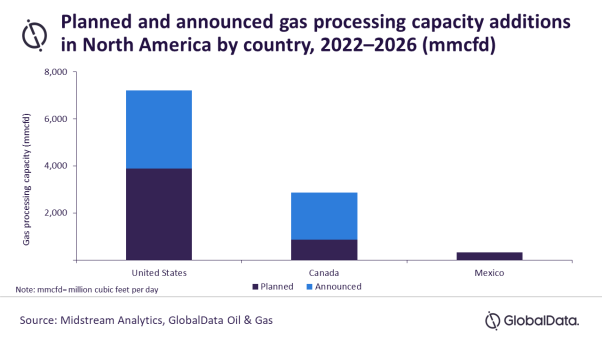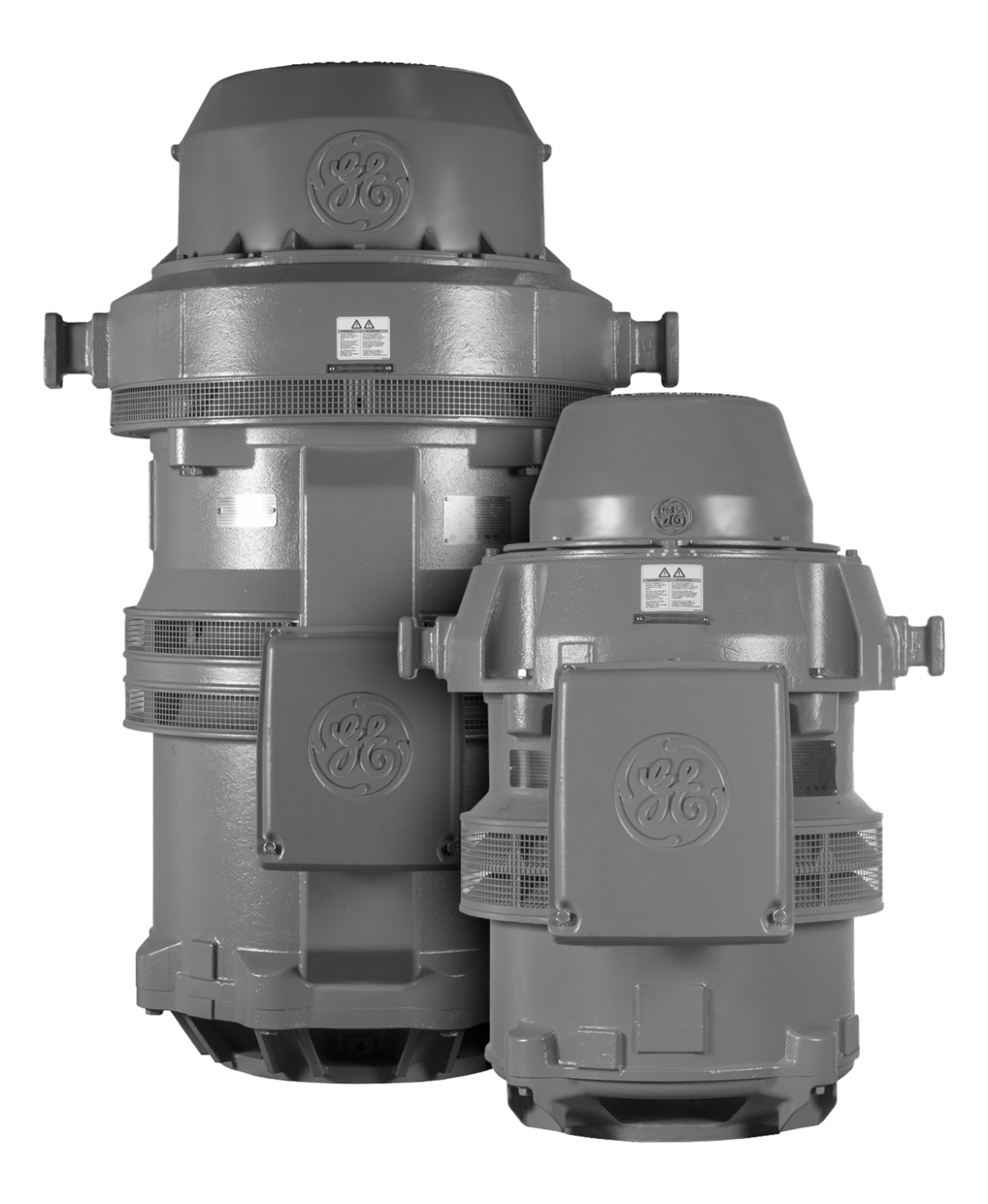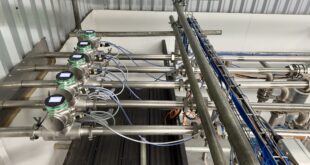The US is expected to account for the largest gas processing capacity addition projects by 2026, according to GlobalData. The data and analytics company notes that the US will account for 69% of the North America’s gas processing additions through new projects.
GlobalData’s latest report, Europe, North America and Former Soviet Union (FSU) Gas Processing Industry Installed CapEx Forecast, reveals that the US is set to have a planned gas processing capacity of 3,881 mmcfd (million cubic feet per day) and an announced gas processing capacity of 3,340 mmcfd by 2026.
Teja Pappoppula, Oil and Gas Analyst at GlobalData, comments: “Smithburg II-VI is the largest upcoming gas processing plant in the country with a capacity of 1,000 mmcfd. This announced dehydration-type gas processing plant is expected to start operations in 2025 with Sherwood Midstream LLC being the operator.”
Image
In terms of gas processing capacity additions, Canada ranks second with a planned and announced gas processing capacity of 2,860 mmcfd by 2026. NGL North II is expected to witness the highest gas processing capacity during 2022 to 2026 with 1,000 mmcfd expected to be added by 2023. Wolf Midstream Inc is the operator of this proposed announced gas processing plant. It will help to de-carbonise Canada’s oil sands industry by recovering higher carbons from natural gas liquids (NGLs) produced in Alberta.
Pappoppula adds: “Mexico accounts for minor capacity additions in the region with 313 mmcfd by 2026. The planned Papan I and Papan II are the major upcoming gas processing plants in the country with a capacity of 150 mmcfd each and are slated to begin operations in 2022 and 2023 respectively. The plant has a crucial role to play by processing natural gas produced at the Ixachi field, which will be transported to demand centers in central and northern Mexico.
 Engineer News Network The ultimate online news and information resource for today’s engineer
Engineer News Network The ultimate online news and information resource for today’s engineer




